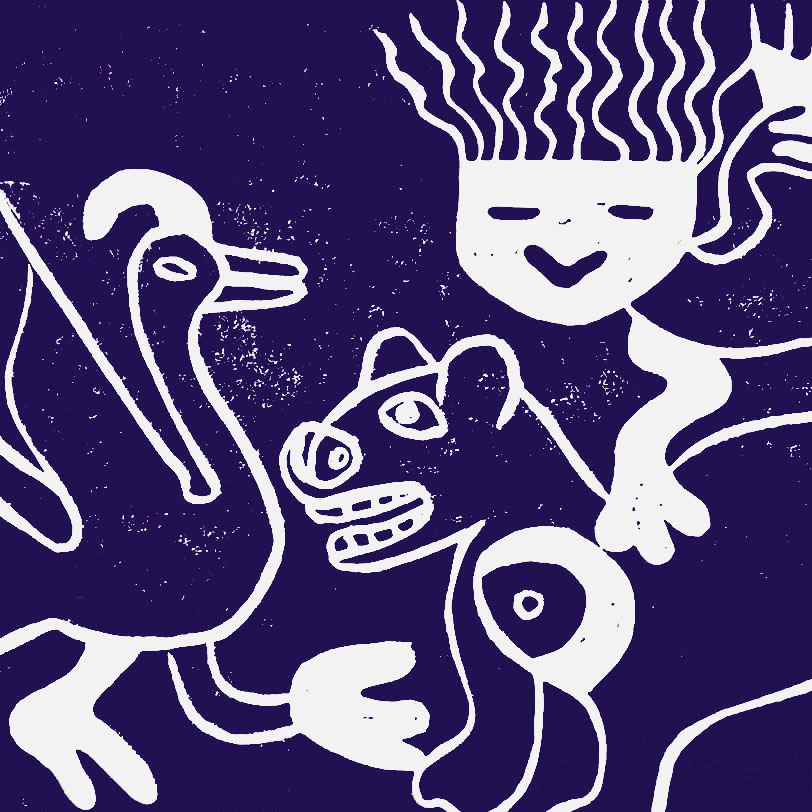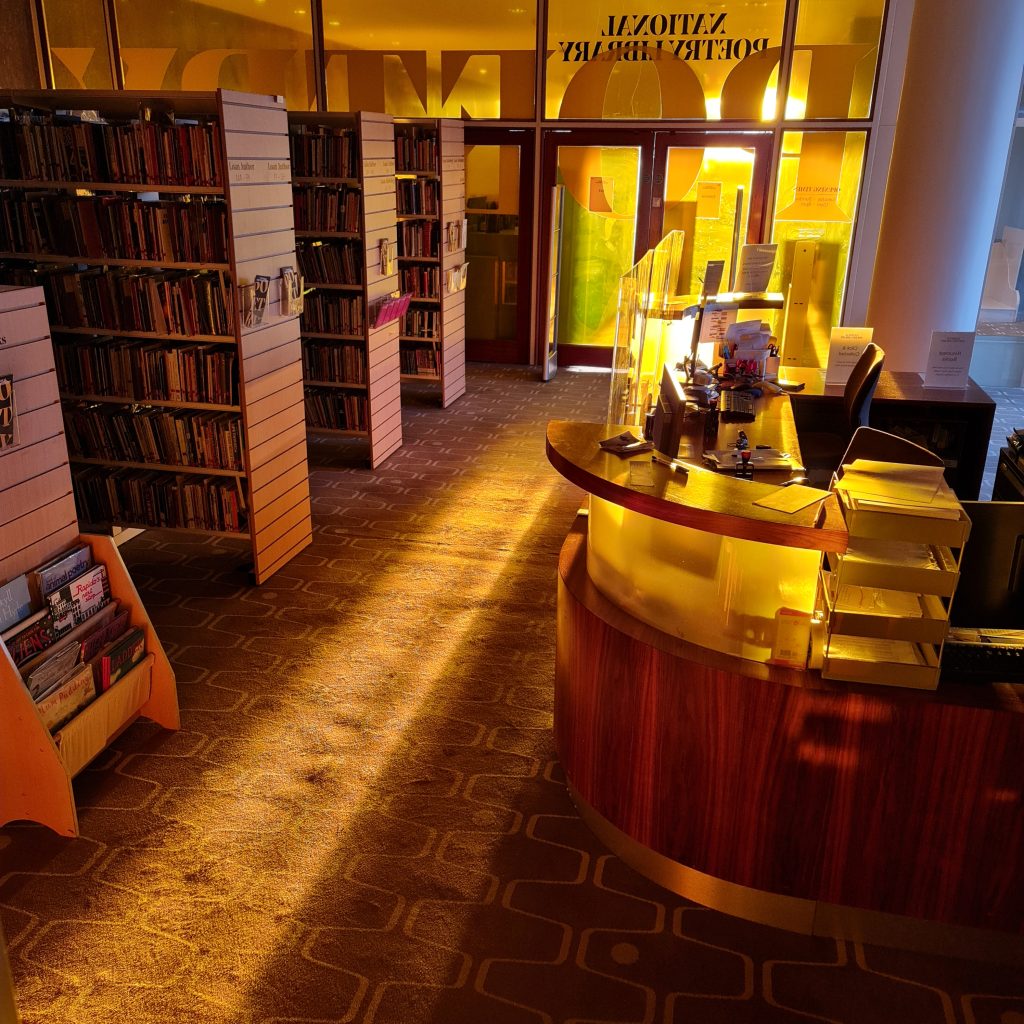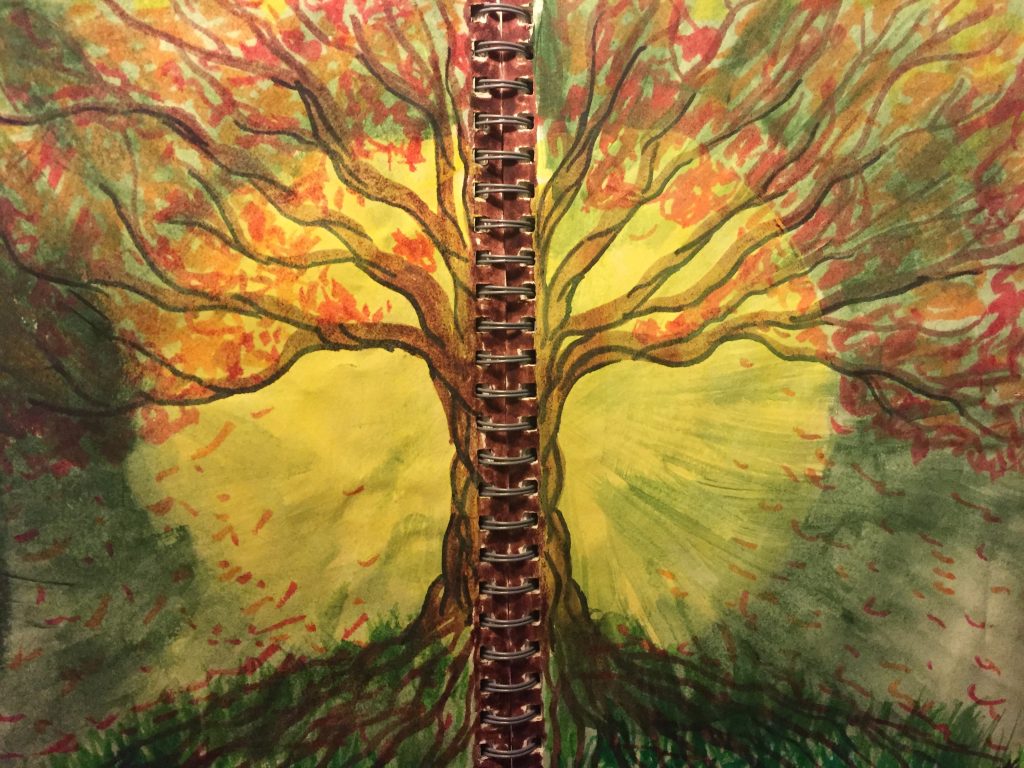Thoughtful Tuesdays: Hodge Podge
By Eithne Cullen

When I told our editor Madeleine I had a mixture of different kinds of pieces for today’s page, I was searching for a word to describe the mix: melange? eclectic? serendipity? Madeleine said she thought it sounded more like a hotch-potch, so that’s what it is. And to welcome you, here’s some linocut art from Patricia Bidi, titled Hotch-Potch.

*****
In keeping with our theme of Nature, Inspiring Creativity: Past, Present And Future, I’m happy to share this short piece, submitted to Pen to Print by James Marshall. It’s a lovely story of birth and regeneration; so relevant as we move through spring and enjoy the rebirth of the flowers and trees around us, alongside the hope that spring always brings.
Henley Giant
The Giant shuffled his weary body to the brow of the hill. He shaded his eyes against the setting sun, looking for sign of his kindred over the fields, the hamlets and the nearby village of Cruche. Nothing.
He sighed and lay down for the final time.
Villagers marched up the hill at dawn with sickles and scythes, gawping at the corpse. Word spread across the county. People walked for days to see the last Giant; drinking cider and singing songs under the midsummer stars.
Autumn came and, with it, the wind and the rain. Birds pecked at the Giant’s flesh. Mice and weasels nibbled his ears. Foxes and badgers preyed upon the smaller mammals. A pack of wolves took up residence in the rib cage and feasted upon the carcass. A brown bear and her cubs snuffled and gorged themselves before shuffling into hibernation.
The snows fell.
Spring came and seedlings sprouted in the rich soil. Circles of mushrooms grew between the finger bones. Ivy crawled over the limbs. The villagers left well alone: plague ravished the land, the stench of death was everywhere. Only tales around the fire pits provided respite from misery.
Saplings grew into trees; a spinney of beeches surrounded the skull, oaks and yews stretched upwards and outwards along the length of the skeleton. Leaves fell and rotted. Worms and centipedes lived and died in the mulch until the soil rose, covering the fallen bones. The Giant-shaped wood was visible from afar.
Stories became legend, legend became myth.
A school was built at the base of the hill. Teachers took laughing children into the wood to see the bluebells and to make bark-rubbings with thick crayons.
The East Wind blew; leaves and branches rippled from head to toe.
And the Giant breathed.
© James Marshall, 2022
Connect with James on Twitter: @CoachExcelsior
*****
Claire Buss’ short story also captures the spirit of growth and rebirth, but its sci-fi slant makes it a sinister read.
Pretty Blooms
I didn’t realise they could fly. Everyone was gathering the pretty blooms and displaying them in vases. We didn’t know they weren’t actually flowers. They had intoxicating perfume; a myriad of glorious colours. Frankly, they were irresistible, and looked so beautiful on the mantelpiece.
Instead of attracting insects, it turns out they were insects. Cleverly disguised, these blood-sucking fiends carried a highly contagious alien virus. Soon, my entire town were incubators for baby monsters. Then the next town. Very soon, my entire country was colonised. It didn’t take long for the world to follow. They were just so pretty.
© Claire Buss, 2020
*****
April is poetry month. As a poet myself, I’m always looking for new approaches and sources of information. Beryl P Brown has written this very informative article about the poetic form haiku. A novelist living in Manningtree, she enjoys all forms of writing. Her latest novel, May’s Stony Road, is available in all formats from the usual outlets and in print from berylpbrown.uk.
A Haiku For All Tastes
If you’ve ever read a collection of haiku, chances are you will have come across work by Matsu Basho. The Japanese poet (1644–1694) devoted most of his adult life to travelling throughout Japan, observing the natural world and gaining inspiration for his poetry.
Although haiku were invented in the 12th century, they had fallen out of style and Basho is largely responsible for their revival in Japan and their elevation from comic verse to poetry of sensitivity and dignity; although an element of humour often remains.
A recluse, Basho, who had become a monk, spent his poetic life living in a succession of three huts, with only the minimum of possessions and comfort. Fellow poets sought him out and one of these ‘disciples’ presented him with a tree, which he planted outside his door and transplanted wherever he set up home. The tree was a basho, and the poet adopted its name as his own. We know it as the banana tree.
Original haiku were written in Japanese characters in the form five-seven-five syllables. In translation, they often lose the strict syllable count, but retain the important ‘caesura’ or ‘turn’: a sort-of truth or reflection. Basho taught that … a good poem is one in which the form of the verse, and the joining of the two parts, seem light as a shallow river flowing over its sandy bed.
haiku should be just
small stones dropping down a well
with a small splash 1
An element of classic haiku is that it represents a moment in time, with no beginning or end. For that reason, they are often written in lower case, with minimal punctuation, no full stop and no title.
irises blooming
from my feet –
sandals laced in blue 2
Seasonal references and a sense of place are other traditional components of haiku. Basho’s travels took him to all corners of Japan, through all weathers, observing the natural world. Being a Zen monk, he had the advantage of safe passage and it’s thought that he wrote over a thousand haiku in his lifetime.
to the capital –
snow clouds forming,
half the sky to go 3
Haiku has come to symbolise Japanese poetry and, from where Basho led and many other poets followed, it’s now believed there are a million haiku writers in Japan. The Japanese press devotes special pages to haiku and poets submit their work for comment. Such is the interest, lecturers can take up to an hour to discuss one 17-syllable poem. Stones engraved with haiku are found scattered all around Japanese cities and countryside.
There are haiku societies worldwide. The British Haiku Society was formed in 1990 and has around 400 members. As many as there are haiku societies, there are probably just as many opinions about the way to write it, and modern haiku writers are unconstrained by traditional forms or subject matter.
In my medicine cabinet
the winter fly
has died of old age 4
However it is written, haiku offers something for every taste: from the profound to the humorous, from traditional to free verse.
1 Kirkup, 1918–2009
2 Basho, 1644–1694
3 Basho, 1644–1694
4 Kerouac, 1922–1969
© Beryl P Brown, 2022
*****
I was interested to hear from poet Mike Sims, and the way in which he created a new volume about Keats with Julia Bird. I’m a lover of Keats’ poetry myself, and was fascinated by how the collection came together.
A Joy Forever: A Walk Out With John Keats, with illustrations by Linda Hughes, published by Paekakariki Press.
In 2013, over a drink, poets Julia Bird and Mike Sims challenged each other to learn John Keats’ Ode To A Nightingale by heart. This conversation was the catalyst to their creation of A Joy Forever, a series of events, and now a new book, published by Paekakariki Press, based on the life and writing of Keats.
A Joy Forever events combine themed readings of Keats’ poems and letters with games, entertainments and food, which the pair have staged at literature festivals and historic houses, including Keats House in Hampstead, the poet’s former home, and the Keats-Shelley House in Rome, where he died of TB, aged just 25.
The events fuse a serious attention to Keats’ writing and history, with more light-hearted approaches for the curious-if-not-especially-literary types. Julia and Mike have created an audience-participation, real-time cut-and-paste poem from famous Keats’ lines, a bingo version of La Belle Dame Sans Merci, a Keatsian Twelve Days Of Christmas and new collaborative poems based on the 11-mile walks they took retracing the routes Keats took from Hampstead to visit his beloved younger sister in Walthamstow, and back.
In commemoration of the 200th anniversary year of Keats’ death last year, Paekakariki Press has just published A Joy Forever in book form. Between its covers, there’s a little hero worship, some games, recipes and pilgrimages, a favourite Keats poem or two, and Mike and Julia’s poems inspired by all of this. They helped hand-set the pages, Linda Hughes illustrated it, and it really is a beautiful, truthful thing.
© Mike Sims, 2022
You can buy a copy of A Joy Forever at bit.ly/buyjoyforever.
Contact: matt@paekakarikipress.com, 07836 785505 and paekakarikipress.com/contact.
*****
I’ve connected with Chris McCabe at the National Poetry Library. If you haven’t been, make sure you visit this lovely space in the Southbank Centre… and it’s free to join!
The National Poetry Library is the largest publicly accessible collection of modern poetry in the world. Based at the Southbank Centre, and housed in the Royal Festival Hall, visitors can take the glass lift from the second floor of the building straight to the doors of the library. Everyone is free to explore and can join with two forms of ID: one with an address and one with a photo. The free membership allows people to borrow books from our extensive loan collections, which we add to with over 100 new publications each month. We also aim to collect every poetry magazine in the UK; available for reference in the library. We have an extensive poetry vinyl collection, which people can browse and listen to in the space, and many artists’ books, exploring the crossover potential between poetry and visual art. We run a programme of events and exhibitions, details of which can be found at: www.southbankcentre.co.uk

*****
Finally, I’m finishing off with a beautiful image from Dr Afsana Elanko, perfectly capturing the feeling of nature and creativity. Enjoy the sunshine!

*****
Read our latest issue of Write On! Magazine here.
You can hear great new ideas, creative work and writing tips on Write On! Audio. Find us on all major podcast platforms, including Apple and Google Podcasts and Spotify. Type Pen to Print into your browser and look for our logo or find us on Anchor FM.
As we move through spring and enjoy the rebirth of the flowers and trees around us, we live alongside the hope that spring always brings.



